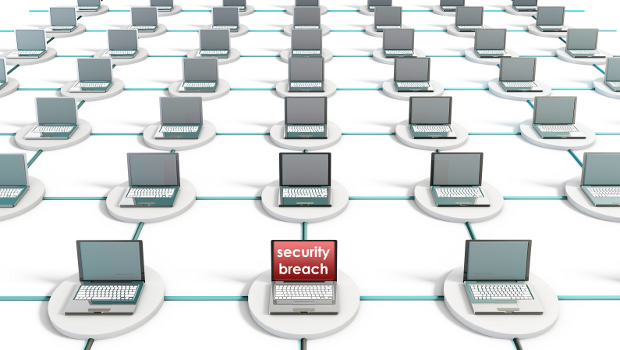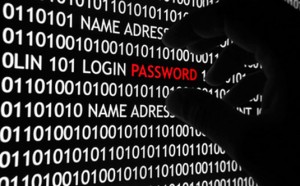 There’s no doubt that technology has come a long way. In the last few years, technological advancements having a bearing on offices have started appearing at an increased pace. In no product segment is this superfast technological development more visible than in the printing industry. Between the earlier versions of inkjet printers and the arrival modern day multifunction inkjet printers, not a lot of time has passed.
There’s no doubt that technology has come a long way. In the last few years, technological advancements having a bearing on offices have started appearing at an increased pace. In no product segment is this superfast technological development more visible than in the printing industry. Between the earlier versions of inkjet printers and the arrival modern day multifunction inkjet printers, not a lot of time has passed.
Nowadays, most offices, small or large, are in the midst of reducing the need for pens and pencils largely because of the increased efficiency and cost effectiveness of printing. However, while public and private organisations are benefitting from the boon that is the inkjet printer, there are also printer security risks that they’re waking up to.
Printer security risks primarily affect those organisations and individuals that deal in sensitive documents. These are individuals and organisations that simply can’t afford for their sensitive documents to be leaked into the mainstream as that would cause widespread mayhem for their profit margins. Such scenarios can only be countered with an understanding the common printer security risks.
Why It Is Important To Be Cognisant Of Printer Security Risks
 Printer security risks are coming to the fore as major concern for most organisations in the world. The recent spate of document leaks are the reason for this renewed focus on printer security risks.
Printer security risks are coming to the fore as major concern for most organisations in the world. The recent spate of document leaks are the reason for this renewed focus on printer security risks.
In recent years, various organisations have fallen prey to innovative attacks from external parties. The most recent example of such a threat is the forced access of Sony servers which resulted in the release of sensitive documents as well as early copies of films.
Countries such as the US and India are constantly under attack from external sources that are interested in their intelligence documents. Statecraft and digital attacks aside, corporate espionage has never been more refined and subtle before than it is now.
Recent researches and studies have even revealed that printer security is one area where private and public organisations are not paying enough attention. For instance, Forbes carried an article last year explaining the hidden security threats in the use of multifunction printers. Moreover, Original Equipment Manufacturers (OEMs) such as Ricoh and Canon amongst others have focused on the issue of printer security risks.
Establishing protection from your competitors is the main reason why you need to be cognisant of the major printer security threats. To this end, here are some common printer security risks that you should pay heed to.
Hacking Via the Internet
 The biggest of all the printer security risks that makes most network administrators and IT staffs tremble in their boots is hacking done by a third party via the internet.
The biggest of all the printer security risks that makes most network administrators and IT staffs tremble in their boots is hacking done by a third party via the internet.
Most modern day printers come with features like remote access and mobile printing. This means that the printer can be accessed by the user through any number of his mobile devices or even websites.
In order for this to be possible, the printer in question needs to constantly be connected to the internet. This can make the printer susceptible to a hacker on the internet. The hacker doesn’t even need to be a super smart prodigy.
A mediocre hacker with enough determination can easily breach the bare minimum security protocols that most organisations use.
Moreover, there also printer security risks rooted in backdoors. Backdoors are essentially holes in the digital security measures for the printer. SQL injection is a particularly horrible printer security threat that was used in a 2008 attack on Heartland Payment Systems’.
In addition, there could be security holes in the firmware installed on the printer as well particularly if the device is an old model that hasn’t been updated to modern security measures.
Breach From Inside Company Networks
 While hacking by a third party via the internet may be the scariest of printer security risks, an even more viable risk is that of a breach occurring from inside the organisation networks. Herein, the access is internal which means that the individual would have user rights to the network.
While hacking by a third party via the internet may be the scariest of printer security risks, an even more viable risk is that of a breach occurring from inside the organisation networks. Herein, the access is internal which means that the individual would have user rights to the network.
While this may make it easier to catch the culprit, that would only happen after the printer security risk has already materialised. Typically, this kind of threat happens through a modification of the software programme installed on the printer in question.
Alternatively, it is also possible to attach another malicious software programme to the existing OEM software programme. In fact, it’s even possible for a network sniffer device to be attached physically to the hardware, as per the SANS Institute.
Changing Of Printer Settings
 There are printer security risks connected to the servicing and maintenance of the printer as well.
There are printer security risks connected to the servicing and maintenance of the printer as well.
Modern day printers are services and maintained by any number of ways such as Printer Job Language (PJL), Telnet, HTTP, and Simple Network Management Protocol (SNMP). SNMP is one of the most commonly used platforms.
It would be possible for an individual to get access to a printer simply by piggybacking on any one of these platforms and change the inherent settings of the device. This is possible because sometimes administrator passwords are stored on the printer memory, itself, when this platform is used.
These passwords can be accessed remotely by any individual with enough skill and knowhow. There are many other ways through which these platforms can actually turn out to be the bane of printer security, if the right measures aren’t taken.
Unauthorised Access to Internal Storage
Advanced printer machines come with preinstalled memory storage. The purpose of this storage is to make it easier for the printer to not only store printed documents but also store documents if the printing queue is particularly long.
The internal memory storage on a printer comes in the form of an installed hard drive. Depending on the settings of the printer, this hard drive could be storing all the documents that are being printed through the printer.
Getting digital access to this hard drive is a fairly simple matter for someone inside the company network. Furthermore, physical access to this hard drive will also make it easy for someone to get at all the saved documents. After all, all it takes for the saved documents to become available is for the hard drive to be connected to a single desktop.
Printer security risks like these really manifest when old printers are discarded in favour of new ones because most organisations and individuals fail to realise that the hard drive need to be wiped properly for the data to be safe.
Direct Hard Copy Document Thefts
Finally, at the end of the day, there is always the risk that someone will be able to steal printed documents right away from the “Out” tray of the printer. This threat is never taken seriously but it is very much viable.
Consider an employee who prints a document but arrives to collect it a little late. If the document has already been lifted by then, then the employee will think that he didn’t give the print command in the first place or some kind of malfunction occurred.
This employee may simply go back to his terminal, give another print command, and collect the second copy with no one the wiser that a sensitive document has been misplaced.
Leave a Reply